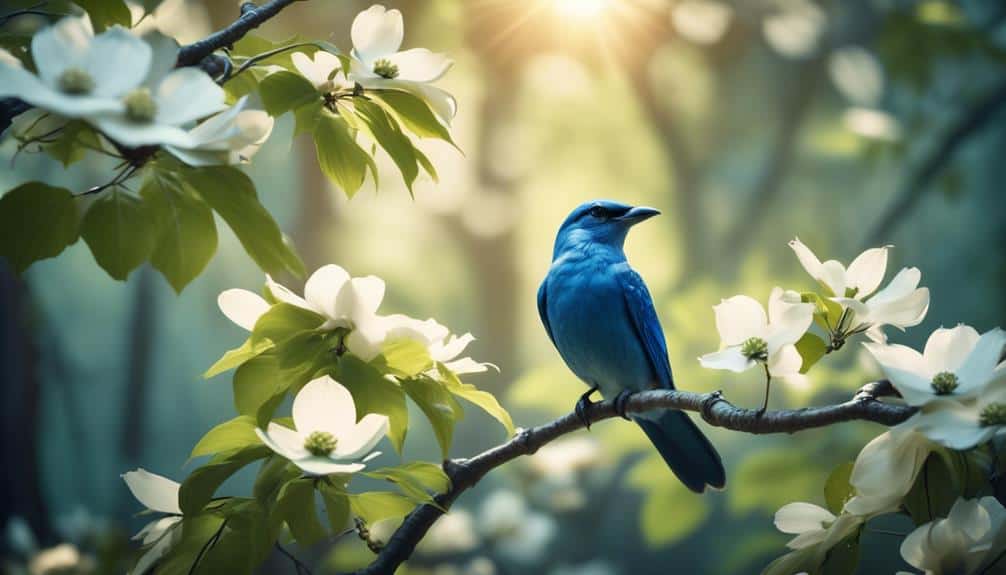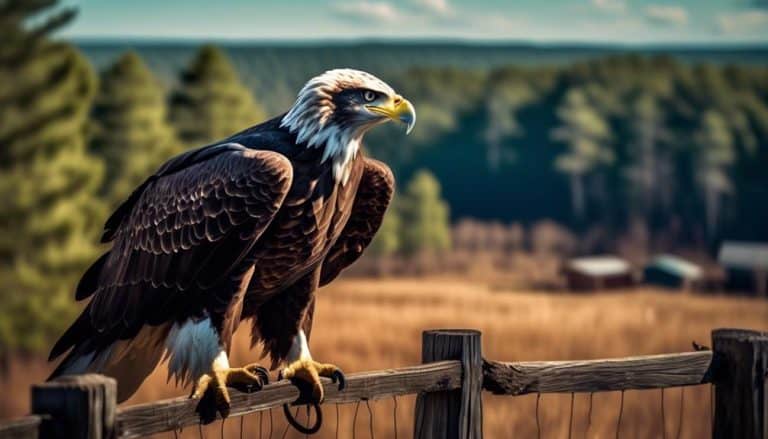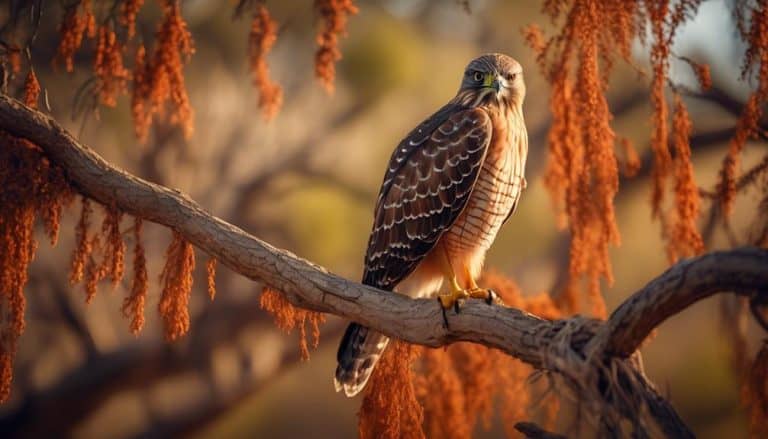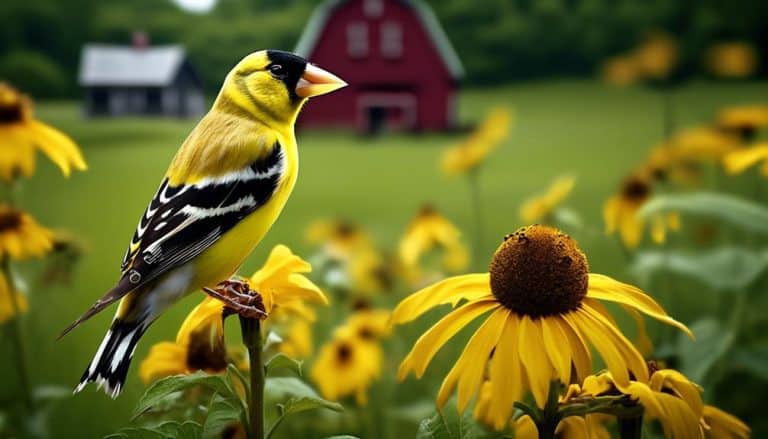As I step outside my house in East Texas, the vibrant colors of the blooming flowers catch my eye, contrasting with the peacefulness of the surrounding landscape. However, amidst this picturesque scene, there is a fascinating creature that adds a touch of wonder to this already beautiful environment: the bluebird.
These charming birds, with their striking blue plumage, have captured the attention of many nature enthusiasts in this region. But what exactly makes East Texas an ideal habitat for these blue birds?
Well, let's explore their behavior, nesting habits, and conservation efforts in this area to truly understand the allure of these captivating creatures.
The Habitat of Bluebirds in East Texas
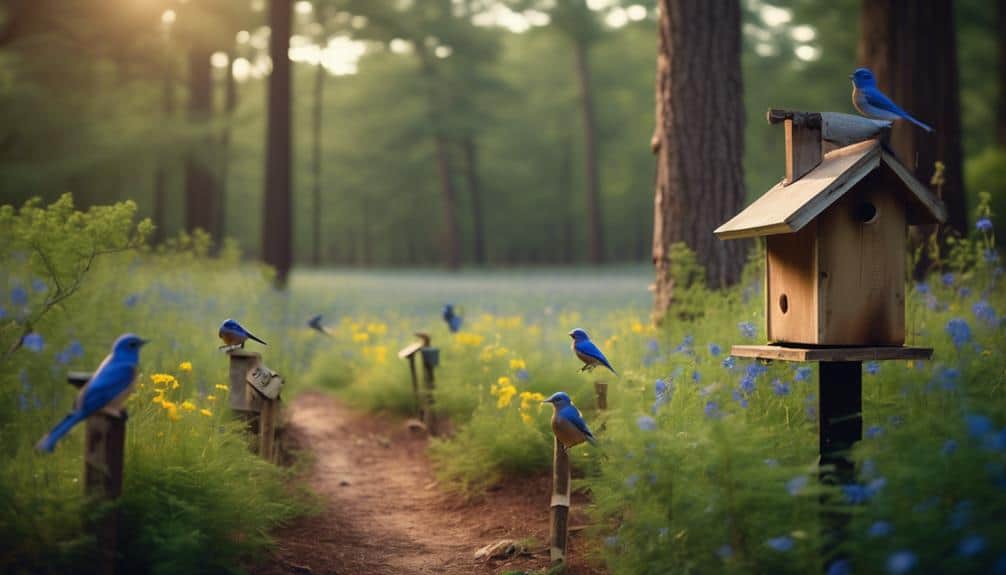
In my research on the bluebirds in East Texas, I've observed that their habitat consists of a diverse range of ecosystems, including woodlands, open fields, and grassy meadows. Bluebirds are known to prefer nesting in cavities found in trees, and these woodlands provide ample opportunities for them to find suitable nesting sites.
However, in recent years, there's been a concerning decline in the bluebird population in East Texas.
One of the factors contributing to this decline is the impact of climate change on bluebird habitats. As temperatures rise and weather patterns become more unpredictable, the availability of suitable nesting sites and food sources for bluebirds is being affected. Changes in rainfall patterns and the frequency of extreme weather events can disrupt the delicate balance of ecosystems that bluebirds rely on.
Moreover, the warming climate is causing shifts in the distribution of insect populations, which are a major food source for bluebirds. As insects move to different areas in response to changing temperatures, bluebirds may struggle to find enough food to sustain themselves and their offspring.
To mitigate the impact of climate change on bluebird habitats, it's crucial to preserve and restore woodlands, open fields, and grassy meadows. Additionally, implementing conservation measures to create artificial nesting sites, such as installing nest boxes, can help offset the decline in natural cavities available for bluebirds.
Bluebird Behavior and Diet in East Texas

Bluebird behavior and diet in East Texas is characterized by their feeding habits and social interactions within their habitat.
Bluebirds in East Texas primarily feed on insects, such as beetles, grasshoppers, and spiders, which they capture by perching on low branches and swooping down to the ground. They also consume berries and fruits, especially during the winter months when insects are scarce.
Bluebirds are known to be territorial, and males often engage in aggressive behavior to defend their nesting sites and food sources.
In terms of migration patterns, bluebirds in East Texas are considered to be partially migratory. Some individuals migrate to southern regions during the winter, while others remain in the area throughout the year.
However, there's evidence to suggest that climate change is affecting bluebird migration patterns. Warmer temperatures and altered seasonal patterns can disrupt the availability of food sources and influence the timing of migration. This can have significant consequences for bluebird populations, as changes in migration patterns can impact their ability to find suitable habitats and resources.
Breeding Patterns and Nesting Habits of Bluebirds in East Texas
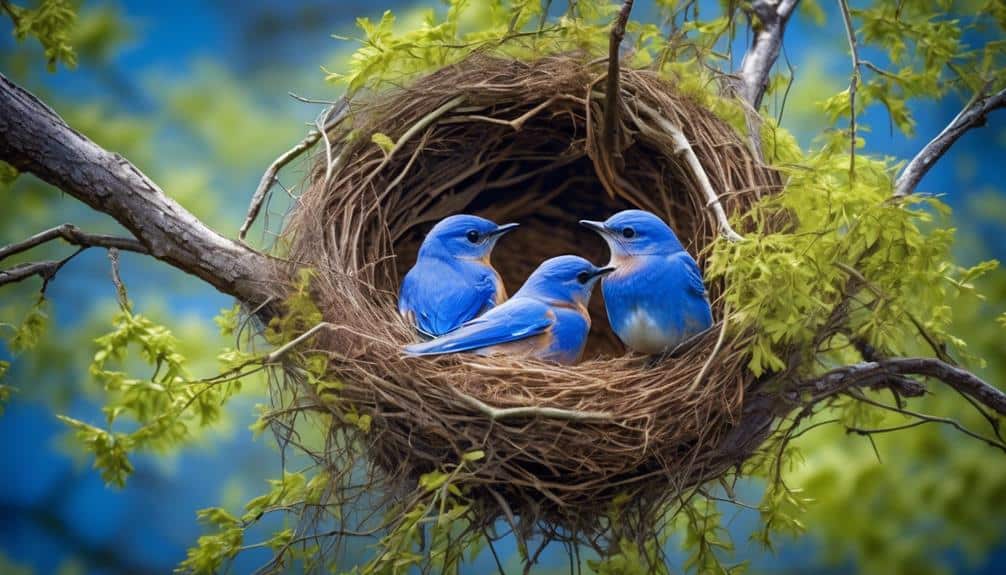
One important aspect to consider when studying bluebirds in East Texas is their breeding patterns and nesting habits. Bluebirds in East Texas follow a distinct pattern of migration, with most individuals arriving in the region during early spring. They migrate from their wintering grounds in the southern parts of the United States and Mexico, where they spend the colder months. This migration pattern coincides with the availability of food resources and favorable nesting conditions.
The population trends of bluebirds in East Texas have shown a gradual increase over the past few decades. This can be attributed to conservation efforts aimed at providing suitable nesting habitats and reducing competition from invasive species. Bluebirds in East Texas prefer open woodlands and forest edges with nearby open fields or meadows, which provide them with ample foraging opportunities. They're cavity nesters, meaning they rely on pre-existing holes in trees or artificial nest boxes for nesting. These nest boxes are strategically placed to mimic natural tree cavities and provide a safe and secure breeding habitat for bluebirds.
During the breeding season, male bluebirds establish territories and court females through elaborate displays, including song and wing-flashing. Once a pair is formed, the female constructs the nest using grasses, leaves, and other plant materials. The nest is typically cup-shaped and lined with fine materials such as feathers. The female then lays a clutch of 3-6 eggs and incubates them for about 12-14 days. Both parents take turns incubating the eggs and feeding the hatchlings. After about 17-21 days, the young bluebirds fledge and become independent.
Understanding the breeding patterns and nesting habits of bluebirds in East Texas is crucial for their conservation. By providing suitable nesting habitats and minimizing disturbances during the breeding season, we can help ensure the continued success of these beautiful birds in our region.
Threats and Conservation Efforts for Bluebirds in East Texas
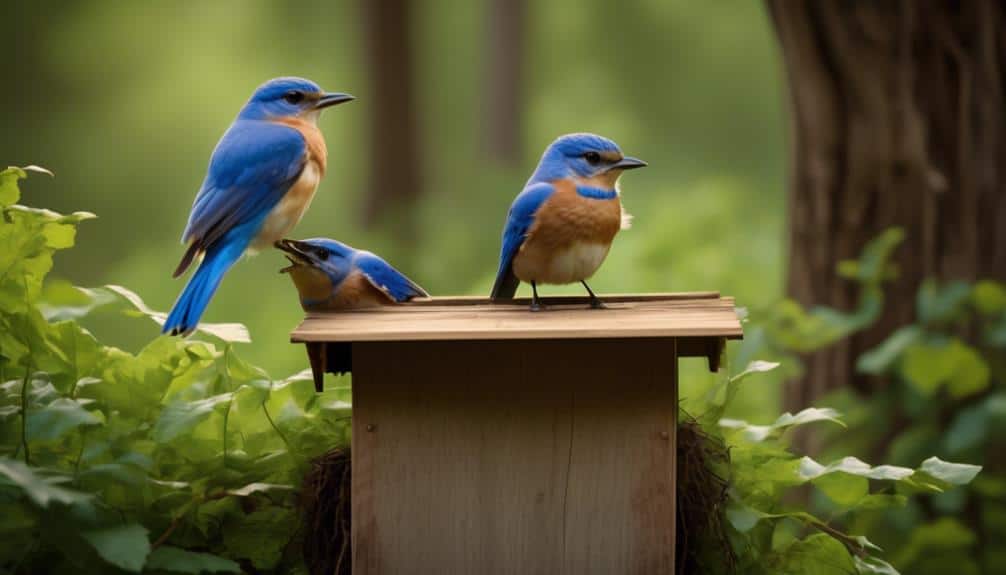
Threats to the bluebird population in East Texas necessitate effective conservation efforts to ensure their long-term survival. The bluebird population in this region has been facing numerous conservation challenges, leading to a decline in their numbers. One of the primary threats is the loss of suitable habitat due to urbanization and land development. As more land is cleared for human activities, the availability of nesting sites and foraging areas for bluebirds diminishes significantly.
Another significant threat is the competition for nesting cavities from non-native bird species, such as European starlings and house sparrows. These invasive species aggressively compete with bluebirds for nesting sites, often taking over their preferred cavities. This competition disrupts the bluebirds' breeding success and can lead to a decline in their population.
Conservation efforts are crucial to address these threats and mitigate the population decline. One approach is the installation of nest boxes specifically designed for bluebirds. These boxes provide alternative nesting sites, reducing the competition from invasive species. Additionally, habitat restoration projects that focus on preserving and creating suitable nesting and foraging areas for bluebirds can help support their population.
Educational programs and community involvement also play a vital role in bluebird conservation. Raising awareness about the threats and challenges bluebirds face can inspire individuals to take action and contribute to their conservation efforts. By working together, we can ensure the long-term survival of bluebirds in East Texas.
How to Attract Bluebirds to Your Garden in East Texas
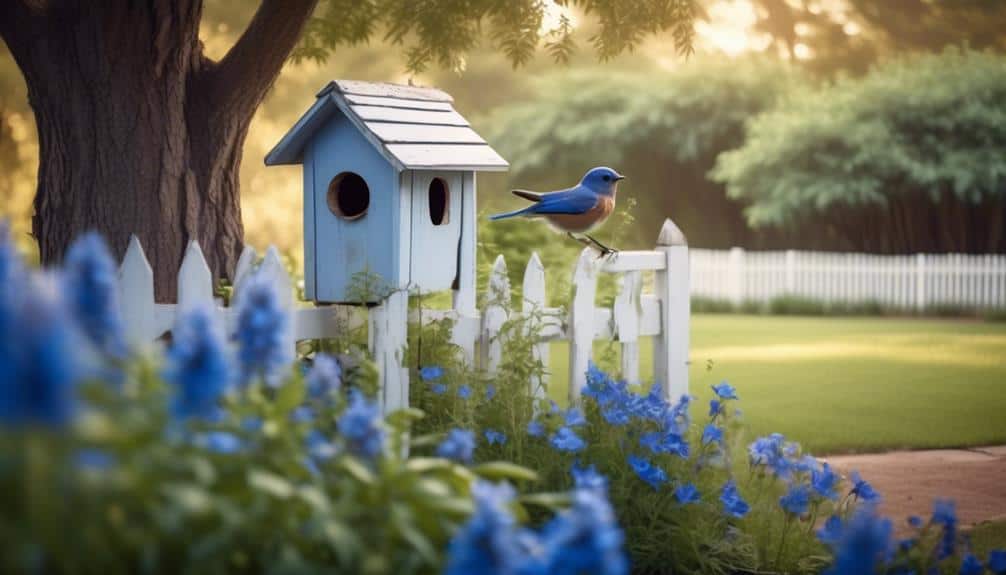
To attract bluebirds to your garden in East Texas, consider implementing specific strategies that cater to their nesting and foraging needs. Creating a bluebird friendly environment is crucial in attracting these beautiful birds. Start by providing an open area with short grass or gravel, as bluebirds prefer open spaces for foraging. Avoid excessive pesticide use, as it can harm the insects that bluebirds rely on for food. Additionally, planting native trees and shrubs can provide natural perches and shelter for bluebirds.
Furthermore, providing the right bluebird nesting boxes is essential. Bluebirds prefer nest boxes that are specifically designed for their needs. The boxes should have a 1.5-inch entrance hole and be made of durable, weather-resistant materials such as cedar. Mount the boxes on sturdy poles or posts, at a height of 4 to 6 feet above the ground, facing towards open areas. It's important to ensure that the boxes are properly maintained and cleaned each year to prevent the spread of diseases.
Frequently Asked Questions
How Do Bluebirds Migrate to East Texas?
Bluebirds migrate to East Texas following their established migration patterns. Various factors influence this migration, such as changes in food availability and weather conditions. Understanding these patterns and factors helps scientists track and study bluebird populations.
Are There Any Specific Predators That Pose a Threat to Bluebirds in East Texas?
There is a predation risk for bluebirds in East Texas due to certain predators. They face threats during nesting, as predators may target their eggs and nestlings. Therefore, bluebirds must be cautious and vigilant to protect their offspring.
What Is the Average Lifespan of a Bluebird in East Texas?
On average, a bluebird in East Texas lives for about 6-10 years. However, through bluebird conservation efforts and understanding their breeding habits, we can ensure their population thrives for generations to come.
Are There Any Specific Diseases That Affect Bluebirds in East Texas?
There are specific diseases that can affect the bluebird population in East Texas. These diseases can have a significant impact, especially when combined with habitat loss. It is important to monitor and address these health threats to preserve the bluebird population.
How Do Bluebirds Communicate With Each Other in East Texas?
Bluebirds communicate with each other through a variety of vocalizations, including calls and songs. They also use body language, such as wing flicking and tail wagging, to convey messages. These behaviors are observed in their nesting habits as well.
Conclusion
In conclusion, the magnificent bluebirds of East Texas continue to enchant and inspire both researchers and bird enthusiasts alike. Their habitat, behavior, and breeding patterns are subjects of great scientific interest.
However, these delightful creatures aren't without their challenges, as threats to their population persist. By supporting conservation efforts and creating inviting garden spaces, we can help ensure the vibrant presence of these feathered wonders for generations to come.
So let's roll out the blue carpet and welcome these avian celebrities into our gardens with open wings!

